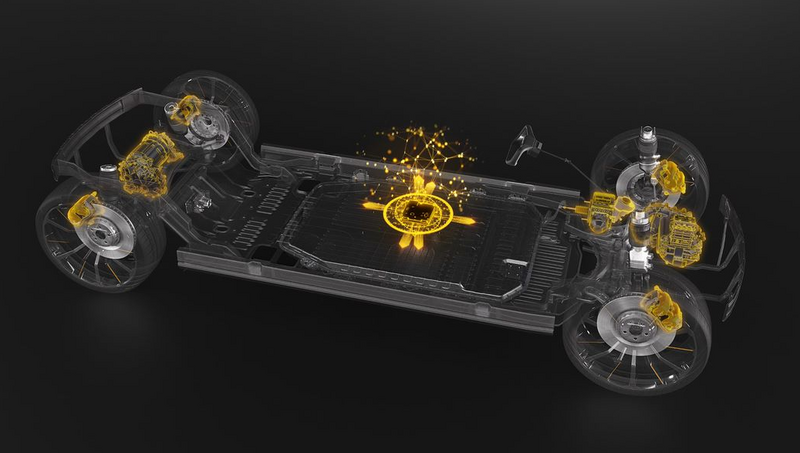Holistic Motion Control: Shaping a harmonious but individual driving experience as simple as this
- Continental supports centralized E/E architectures that, among other things, reduce the complexity of vehicle motion control
- Software-as-a-product: Continental's motion control software creates new deployment and business models and enables multi-actuator concepts and holistically harmonized driver experiences
Forward-looking automotive concepts are inconceivable without a powerful, central E/E architecture. This is because with the increase in manual, assisted and autonomous driving functions, the growing complexity of driving can no longer be managed smoothly. Therefore, hardware architecture is rapidly changing to centralized, server-based approaches, with subsystems moving toward smart sensors and smart actuators.
The automotive world is undergoing a transformation in the era of Software Defined Vehicles (SDV). The separation of software and hardware businesses is creating new market opportunities. One driver of change is over-the-air (OTA). Consumers thus have the opportunity to upgrade the vehicle with new functions and features over the lifetime of the vehicle without having to buy a new model. As part of the service-oriented architecture (SOA), automotive software will be divided into several layers and modularized by offering middleware software and application software as one product. Continental will offer separate solutions in the future, giving automakers the flexibility and freedom to create infinite possibilities by decoupling software and hardware products.
In the past, the control of actuators for vehicle movement in distributed vehicle architectures was closely coupled with the individual driving function. This is now changing with the trends mentioned above. To meet these requirements, Continental offers the third generation of Holistic Motion Control Software (HMC SW) as a command center that orchestrates all vehicle motion actuators for longitudinal, lateral and vertical control. Centralized but modular and scalable, it provides a unified interface that is independent of the actuators and decouples the driving function from the specific actuator and vehicle configuration. In manual, assisted and autonomous driving, Holistic Motion Control works harmoniously with integrated stability control on all surfaces. Intelligent allocation supports the realization of target dynamics that match the individual vehicle DNA.
HMC is a host-independent and highly configurable application software. The resulting validated software modules are scalable and portable. They can be reused in many potential hosts, as needed in the given vehicle-specific E/E architecture. This type of centralization and resolution of functional units ("boxes") thus reduces the complexity of vehicle motion control.
SDVs are thus no longer primarily supported via stationary control units, but from the cloud on the software side. Individual functions or function groups can thus be "purchased" as software products. This largely opens the door to the software-as-a-product model. In the context of vehicle dynamics, HMC software is a central building block for realizing these trends.



